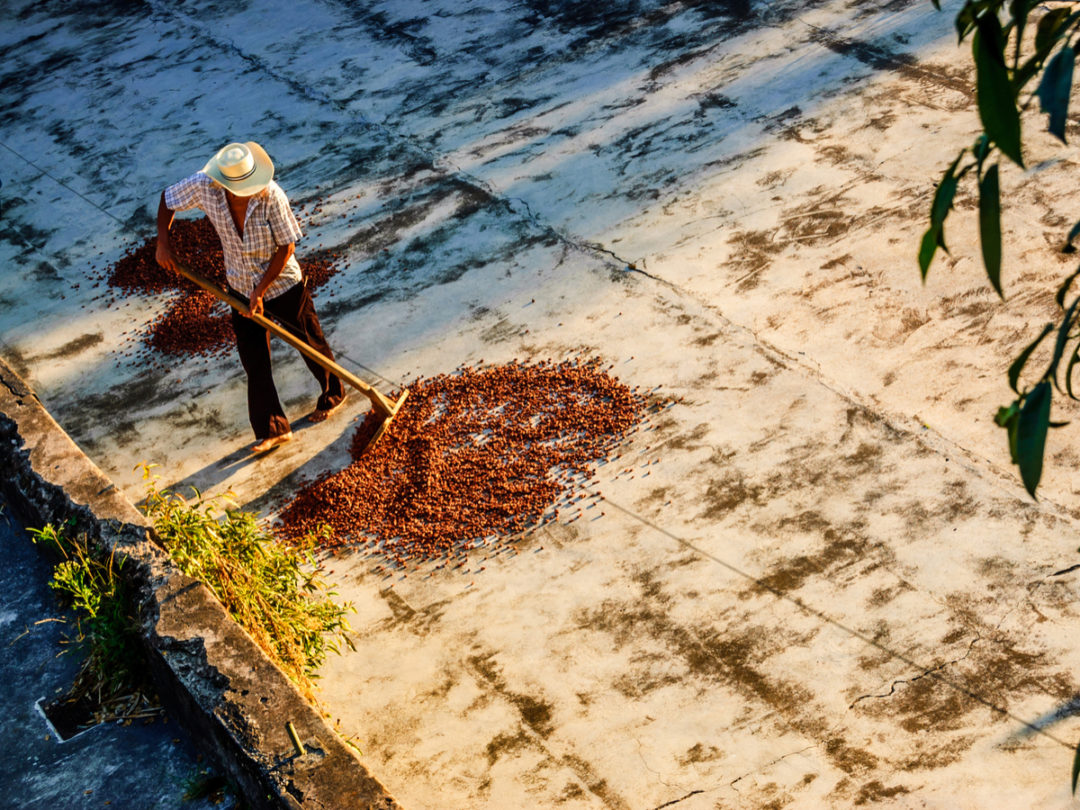
Visit Our Sponsors |
|
|
|
|
|
|
|
|
|
|
|
|
|
|
|
|
|
|
|
|
|
|
|
|
|
|
|
|
|
|
|
|
|
|
|
|
|
|

Cocoa giant Olam International Ltd. can now trace the supply of the majority of the beans it buys, stepping up sustainability efforts as customers and governments increasingly want to know where food comes from and whether it was ethically produced.
The world’s third-largest cocoa processor is able to track all the cocoa in its direct supply chain in nine countries back to an individual farm, community, or the first point of purchase, where a farmer or cooperative is paid, said Gerry Manley, head of Olam’s cocoa unit. That’s about 60% of the beans the Singapore-based trader purchases, or 12% of the world’s cocoa.
The move comes as the European Union plans to introduce legislation that could eventually make firms responsible for human rights abuses and environmental harm in their supply chain. In the U.S., lawmakers proposed banning imports of cocoa produced with child labor. Rival Barry Callebaut AG last month started disclosing the cooperatives and buying stations from which it directly sources cocoa in three West African countries.
“Traceability is really the key to unlocking a lot of the issues we have today, whether that’s child labor, deforestation or finding out about issues of poverty and education,” Manley said in an interview. “Only through government action and regulation will we actually get a system whereby all cocoa will be traceable.”
Most of the world’s cocoa is grown in small farms, with many in top producer West Africa planting their crops in just one to two hectares of land. The industry has also historically transacted through the hands of middlemen in remote areas, who pick up and transport beans to buying hubs. Restricted access to internet has also previously been a challenge.
Olam is using technology to trace about 600,000 metric tons of cocoa in nations such as Ivory Coast, Indonesia, Nigeria and Brazil. While it tracks some purchases in Ghana, it’s harder to control the full chain of custody because of the country’s centralized system in which a regulator sells and ships the beans, Manley said. Olam also can’t trace what it buys from partners.
“We will get more done over time, I’m sure about that, as other suppliers also get traceable cocoa into their supply chain,” Manley said, adding that public-private partnerships are needed to reach the full supply chain.
Deforestation has been a pressing issue for the industry, with forest area in top grower Ivory Coast falling more than 80% since the 1960s to 3 million hectares in 2018. A recent report by the International Cocoa Initiative also noted that around one in three minors in growing areas of Ghana and Ivory Coast are affected by child labor.
Tracking cocoa also allows companies to better understand where sustainability efforts including farmer training and schooling are most needed. That could help alleviate poverty, an issue that prompted Ivory Coast and Ghana to introduce a $400 a ton premium above the futures market for their cocoa. Traceability could be even more important as the pandemic slashed demand.
“Clearly Covid has had a very severe impact on demand for cocoa and chocolate in the past six months and that’s creating a surplus in the market that will have its own effect on price,” Manley said. “That’s not going to make life particularly easy for producing countries.”
RELATED CONTENT
RELATED VIDEOS
Timely, incisive articles delivered directly to your inbox.






